#board evaluation
Explore tagged Tumblr posts
Text
Excellence Enablers – Corporate Governance Solutions for Effective Boards
Excellence Enablers is a trusted corporate governance advisory firm offering tailored solutions to strengthen Board performance and Governance practices. Our services include Board Effectiveness Consultancy, Board Evaluation, Governance Audit, Training Programme for directors, Sustainability and ESG advisory, Board Process Consultancy, Succession Planning, and Corporate Governance consultancy for startups. Think Corporate Governance, Think Excellence Enablers.
#Corporate Governance#Governance Audit#Succession Planning#Corporate Governance Concepts#Board Evaluation#Board Effectiveness
0 notes
Text
#corporate governance#board evaluation#corporate governance consultants#excellenceenablers#corporate governance in india#Startups in India#startup#investment
0 notes
Text

Role of Directors Networking in Corporate Governance
Good networking skills nurture business growth, and the director's network has a significant role in business management.
Let's uncover the importance of the director's connection in business governance.
Fostering Innovation
With the directors networking, a business can acquire multiple opportunities, such as better resources, and learn about the latest insights in the business. Most importantly, the directors have access to the best in the market to use in innovation. Several studies highlight the benefits of directors' networks in business. A Steve job, the former CEO of Apple, is the perfect example of the benefits of a director's networking in business. He came up with the best Apple device through their networking skills. If you are looking for such a program or association through which you can build a better network, then register for our corporate membership program for the betterment of the business.

Increase value and Improve the Firm's Network
It is discovered that the directors who sit on many boards improve the firm's networking and value. So, if you are searching for the best and most effective networking program, join us. You will achieve multiple benefits when you choose our academy for directors. We organize several events online and offline for the directors and business experts for the director's network.
Multifaceted Impact on Corporate Governance
There are several impacts of directors networking in business monitoring. The directors' board network plays a major role in creating a positive impression socially and can influence firm characteristics. With their networks' help, directors provide the business with the best resources, better insights, and the latest corporate regulations and standards updates. So, if you are searching for the best networking program, join our program now.
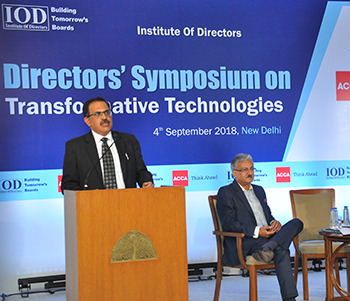
These are the significant role of directors' networks in business governance. We are a recognized institute offering the best professional development training sessions and networking opportunities to the directors and boards for the betterment of their business.
Our academy was established in 1990 in India under the Societies Registration Act. You can also enroll in our program for the best Board Evaluation and board excellence.
0 notes
Text
Excellence Enablers Private Limited
Excellence Enablers Private Limited provides services such as board evaluation services, board consultancy services, tranning programmes for directors . We can provide a deep insight overview of issues that your board has and provide customized solutions to the corporate governance needs of the company .
#consultancy services#board evaluation#board evaluation in india#corporate governance consultancy in India
0 notes
Text
great news is that after panicking me for half the week, our insurance has now confirmed my room isn't an asbestos risk 😭
#❛ 𝐒𝐈𝐃𝐄 𝐒𝐓𝐎𝐑𝐈𝐄𝐒 ⧽ — ooc.#THANK. GOD.#i thought my room situation couldnt get any worse but when they evaluated the room they boarded the whole room up and omg ... kept me#worried for 3 days. because both my family and i had been in that room for hours after it happened#anyway i am so . so sorry for the dissapearance. i had a prime situation to get to everything but honestly. THIS HAPPENED.#im getting my writing muse back but have been lurking on my main ...#if i dont do my inbox call by next week i will cry and post on dash calling myself out#JK--
9 notes
·
View notes
Text
They’re not quite the same flavour of mother/child but miguel is conchata’s onion <- insane sentence if you haven’t seen a completely different show
#like I don’t think Conchata regrets her children in the same way Caroline does#but there’s like SOMETHING in how she initially treats Miguel as though she lost the battle w him from the moment he was taken to boarding#school and how what she resents in miguel is actually the ways in which THEYRE similar and not miguel to either stone or George 🕳🚶♂️#and Miguel PICKED UP that she feels she’s given up on him from the begining and it just drives a deeper wedge between them#plus the whole Conchata not wanting to evaluate her physical violence and Miguel verbally lashing out at her and refusing to be emotionally#vulnerable (not good at this in general but w his mum it’s striking)#idk I think i just have succposting brain poison but I think a lot about ‘you were my onion / yeah well you’re my fucking onion’#tunes talks 2099
22 notes
·
View notes
Text
A good while ago, I watched this video about an MtG interaction between Ashaya and Blood Moon, and aside from my usual gripes with Blood Moon's wording, there was something that really bothered me: The comments. Specifically, people failing to understand the beautiful way that the rules handle continuous effects (specifically, continuous effects generated by static abilities). So let's go on a quick* trip through the magical world of card game rules.
And no, it's not about layers.
Continuous effects are when a card is continuously affect the game state; for example, increasing the power of all elves by 1. However, continuous effects also use information about the current game state to determine what exactly they do; for example, the effect above needs to know what creatures on the field are elves. This can cause problems when multiple continuous effects start messing with each other.
Take this card for example:

"The monster(s) with the highest ATK on the field is unaffected by the effects of Spell Cards." That's a perfectly reasonable effect, very intuitive, easy to apply. For example, if the two monsters on the field are these:


Then Blue-Eyes will be unaffected by spells. So if someone plays Dark Hole:
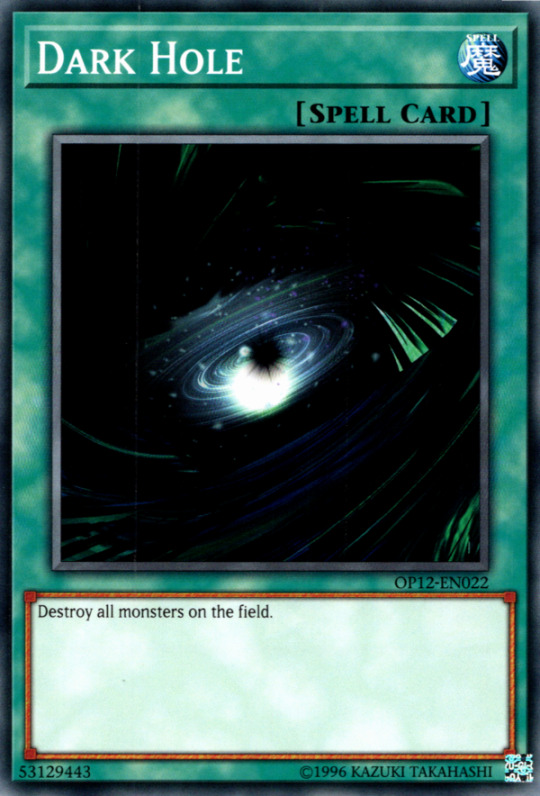
Then Dark Magician will be destroyed, but Blue-Eyes will not. Simple. Now, another very simple question, what happens if someone equips Dark Magician with this:

It gains 700 ATK, which means it has 3200 ATK. Which means it's the highest ATK on the field. Which means that, because of Pole Position, it's unaffected by spell cards. Which means it's no longer affected by Magic Formula. Which means its ATK is 2500 again and thus Blue-Eyes has the highest ATK. Which means it's affected by Magic Formula and gains 700 ATK. Which means it's the highest ATK...
The Yugioh rules address situations like these by saying "Please don't do anything that would start a loop."
And looking at Ashaya + Blood Moon, you might think the same thing would happen:

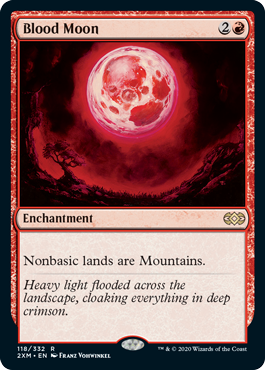
For clarity, Blood Moon's effect also causes nonbasic lands to lose all their abilities. They didn't write this on the card because they hate you.
So what you might expect to happen is that Ashaya turns itself into a land. Because it's now a land (and not basic), Blood Moon makes it a Mountain and takes away its abilities. But since Ashaya's ability that made it a land is gone, that means it isn't a land anymore. That means that Blood Moon stops applying to it. That means it gets its abilities back. That means it turns itself into a land. So now it's affected by Blood Moon...
But we've all watched the video, so we know that what actually happens is that Ashaya ends up as a land creature with no abilities (except the Mountain ability of T: Add {R}). But what happens when Ashaya's controller (let's call her Amy) plays another creature after Ashaya has lost its abilities? (and let's say there's a +1/+1 counter keeping Ashaya alive)
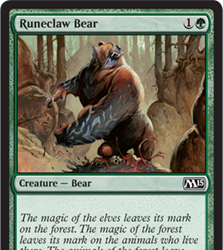
Well, obviously, nothing will happen; Ashaya no longer has its ability that turns Amy's creatures into lands, so the bear stays a regular creature. And THIS, THIS is the failure to understand layers that INFURIATES me, because obviously, OBVIOUSLY the bear becomes a Land Creature - Mountain Bear!
Unfortunately, if you don't immediately get an intuitive understanding of the beautiful design of the way MtG handles continuous effects, it's actually super unintuitive and hard to explain. Which is why I've come up with a model to help understand why Ashaya's ability is NOT gone, and in fact still applies to the bear even though Blood Moon already made Ashaya lose its abilities.
The way we players are used to understanding the game is through what I'll call the Final Game State, where all the continuous effects have applied to the cards on the field. 99% of the time, the final game state is what matters. In the final game state, Ashaya has no abilities besides T: Add {R}, so it seems like it can't possibly turn the bear into a land. But this way of viewing the game is flawed: If Ashaya truly doesn't have its ability, then it shouldn't be a land. But if it isn't a land, then Blood Moon doesn't apply... How do we avoid the loop?
Let's go back to the fundamental problem of continuous effects: They affect the game state, but they also use information from the game state. When two continuous effects are each altering the information that the other uses, we get a loop. The solution: Don't make continuous effects get their information from the final game state.
DISCLAIMER: I just read through the comprehensive rules sections 611 and 613 and while 613.1 matches my understanding for individual objects, there's nothing about how the game state as a whole is determined, and little about determining the existence or nonexistence of continuous effects. However, I'm pretty sure I'm right, so I'm probably right. Anyway,
The core idea of the model is this: There are multiple game states in existence at any given moment. The first is the raw game state, which is dependent purely on the cards on the field, unmodified by continuous effects. All other game states, including the final game state, are dependent on the raw game state (though not always directly dependent)
Let's say we have just an Ashaya on the field, nothing else. To find the final game state, we start from the raw game state: Ashaya is a 0/0 legendary creature - avatar, with its 2 printed abilities. From here, we find all the continuous effects that exist that haven't been applied yet. There are 2, generated by Ashaya's abilities: One that turns it into a Forest, and another that sets its power/toughness. We apply the Forest one first because of layers (not important).
Normally, we think of "applying a continuous effect" as modifying the game state. But in this model, we instead create a new game state, equal to the raw game state plus the application of the continuous effect. Let's call this "game state 2". It's important to note that game state 2 is dependent on the raw game state, which still exists. In game state 2, Ashaya is a 0/0 legendary land creature - forest avatar with 3 abilities (the new one being T: Add {G}). Now, just like last time, we look for continuous effects that haven't been applied yet. Ashaya's p/t setting ability creates a p/t setting effect, so we'll apply that.
Just like last time, we create a new game state by taking game state 2 and applying the continuous effect. Now we have game state 3, which is dependent on game state 2, which is dependent on the raw game state. In this state, Ashaya is a 1/1 with the same types and abilities from game state 2. Now there's no more continuous effects left that haven't been applied, so we're done, and game state 3 is the final game state.
Wow! That was a lot of work to find the final game state! So what happens if Amy plays a Runeclaw Bear now? Well, that gives us a different raw game state, and since everything is dependent on the raw game state, we need to throw out all the work we did and start from scratch. This sounds like a huge pain in the butt, but usually not much changes. In this case, the new final game state looks very similar to the old one; we just add a bear and turn it into a forest. But that's not technically the way the rules handle it. In the rules, it goes through the whole process, evaluating every continuous effect and how each one applies to every object.
For example, let's say we have Ashaya and Blood Moon, and Ashaya has a +1/+1 counter on it so it doesn't die. Raw game state: Ashaya has its printed characteristics and is 0/0. Game state 2 - Ashaya type change: Ashaya is a forest land creature. Game state 3 - Blood Moon type change: Ashaya is a mountain land creature with no abilities (except T: Add {R}). Game state 4 - +1/+1 counter: Ashaya is a 1/1.
Great, that went exactly as expected. Ashaya has now lost its abilities... in the final game state. In the raw game state, Ashaya's abilities are still there! Thus, when Amy plays the Runeclaw Bear, it makes perfect sense that the bear is turned into a land by Ashaya's ability:
Raw game state: Ashaya and the bear have their printed characteristics. Game state 2 - Ashaya type change: Ashaya and the bear are forest lands. Game state 3 - Blood Moon type change: Ashaya and the bear are mountain lands and lose their non-mountain abilities. Game state 4 - +1/+1 counter: Ashaya is a 1/1.
Whenever a new creature enters the battlefield under Amy's control, the game will go through this process starting with the raw game state, and Ashaya will turn that creature into a land. Ashaya's ability isn't gone, it's still right there, printed on the card. Each time the game evaluates continuous effects, the effect from Ashaya's ability always applies before the ability is removed by Blood Moon.
Even though there's never a final game state where Ashaya has its ability, the ability still applies, even to new objects.



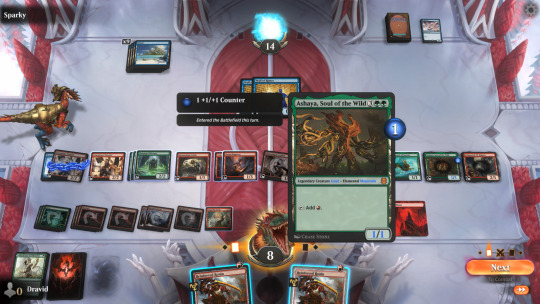
*it was not a quick trip
#original#about the disclaimer: what i mean by “i'm pretty sure i'm right” is that the alternative is that each object is evaluated separately#like. in order#and then how would you determine what order to evaluate the objects in?#if ashaya gets evaluated first then it turns itself into a forest but then loses its ability#so then when you evaluate the other creatures ashaya's ability won't turn them into lands#but if you evaluate the other creatures first then ashaya WILL turn them into lands because its ability hasn't been removed yet#and that is so much more fucked up#so yeah i'm pretty sure it evaluates the entire game state at once#this whole “separate game states” model is just that: a model#there aren't literally multiple game states in existence it's just a useful way of understanding how continuous effects are applied#and how an ability can exist and affect things even if it isn't present in the final game state#the important part is that you start from the unmodified characteristics of the board#also i had to craft blood moon in order to get those screenshots#i wrote up this entire thing and then thought ��wait maybe i should actually make sure i'm right”#and i am! so yeah i'm probably right mostly kinda#the model works!
3 notes
·
View notes
Text
having to wait until the 18th to know my test score is. GRAURG (gnawing on wood)(waiting for cursed package) i want to know now!!!!!!!! i crave knowledge (of my grade AND qualifications assessment). i am too amped up to read about charlemagne’s intellectual circle. I Have To Know
#i want to get into my unis phd program please please pleaseeee#my thesis advisor and esteemed professor (love her) is in the evaluation board so… this bides well
6 notes
·
View notes
Text
GENUINELY going through the worst time of my goddamn life it is not even funny anymore .
#amber rambles#am about to apply for re evaluation of my BOARD answer sheets cause things went THAT shit and i’m genuinely so disappointed#with myself and everyone i know is disappointed with me#i would honestly like to drop dead
4 notes
·
View notes
Text
https://excellenceenablers.com/services/board-evaluations/
#Board evaluation services in India#Board evaluation#corporate Governance#Corporate Governance in India
0 notes
Text
https://excellenceenablers.com/services/board-evaluations/
1 note
·
View note
Text
What exactly is an AI agent – and how do you build one?
New Post has been published on https://thedigitalinsider.com/what-exactly-is-an-ai-agent-and-how-do-you-build-one/
What exactly is an AI agent – and how do you build one?
What makes something an “AI agent” – and how do you build one that does more than just sound impressive in a demo?
I’m Nico Finelli, Founding Go-To-Market Member at Vellum. Starting in machine learning, I’ve consulted for Fortune 500s, worked at Weights & Biases during the LLM boom, and now I help companies get from experimentation to production with LLMs, faster and smarter.
In this article, I’ll unpack what AI agents actually are (and aren’t), how to build them step by step, and what separates teams that ship real value from those that stall out in proof-of-concept purgatory.
We’ll also take a close look at the current state of AI adoption, the biggest challenges teams face today, and the one thing that makes or breaks an agent system: evaluation.
Let’s dive in.
Where we are in the AI landscape
At Vellum, we recently partnered with Weaviate and LlamaIndex to run a survey of over 1,200 AI developers. The goal? To understand where people are when it comes to deploying AI in production.
What we found was pretty surprising: only 25% of respondents said they were live in production with their AI initiative. For all the hype around generative AI, most teams are still stuck in experimentation mode.
The biggest blocker? Hallucinations and prompt management. Over 57% of respondents said hallucinations were their number one challenge. And here’s the kicker: when we cross-referenced that with how people were evaluating their systems, we noticed a pattern.
The same folks struggling with hallucinations were the ones relying heavily on manual testing or user feedback as their main form of evaluation.
That tells me there’s a deeper issue here. If your evaluation process isn’t robust, hallucinations will sneak through. And most businesses don’t have automated testing pipelines yet, because AI applications tend to be highly specific to their use cases. So, the old rules of software QA don’t fully apply.
Bottom line: without evaluation, your AI won’t reach production. And if it does, it won’t last long.
The future of IoT is agentic and autonomous
Agentic AI enables autonomous, goal-driven decision-making across the IoT, transforming smart homes, cities, and industrial systems.
How successful companies build with LLMs
So, how are the companies that do get to production pulling it off?
First, they don’t just chase the latest shiny AI trend. They start with a clearly defined use case and understand what not to build. That discipline creates focus and prevents scope creep.
Second, they build fast feedback loops between software engineers, product managers, and subject matter experts. We see too many teams build something in isolation, hand it off, get delayed feedback, and then go back to the drawing board. That slows everything down.
The successful teams? They involve everyone from day one. They co-develop prompts, run tests together, and iterate continuously. About 65–70% of Vellum customers have AI in production, and these fast iteration cycles are a big reason why.
They also treat evaluation as their top priority. Whether that’s manual review, LLM-as-a-judge, or golden datasets, they don’t rely on vibes. They test, monitor, and optimize like it’s a software product – because it is.
The truth about enterprise AI agents (and how to get value from them)
What’s the point of AI if it doesn’t actually make your workday easier?
This post is for paying subscribers only
Subscribe now
Already have an account? Sign in
Become a member to see the rest.
You’ve landed on a piece of content that’s exclusive to members. Members have access to templates, real-world presentations, events, reports, salary calculators, and more. Not yet a member? Sign up for free.
Sign up See all plans
Already a member? Sign in
#adoption#agent#Agentic AI#agents#ai#AI adoption#ai agent#AI AGENTS#amp#applications#Article#Articles#autonomous#biases#board#challenge#cities#Companies#content#datasets#deploying#developers#engineers#enterprise#enterprise AI#evaluation#Events#focus#form#Future
0 notes
Text
HPBOSE रिजल्ट गड़बड़ी: अंग्रेजी पेपर में गलत मूल्यांकन, जल्द आएगा संशोधित परिणाम #HPBOSE #Result #Error #English #paper #evaluation #HimachalPradeshBoard
0 notes
Text
Board Evaluation Consulting Services - Realize Solutions
Enhance your board’s governance and overall effectiveness with expert Board Evaluation Consulting Services. We help organizations assess board performance, governance structures, and decision-making processes. By conducting a comprehensive evaluation, we identify strengths and areas for improvement, providing actionable insights that lead to better strategic alignment and improved outcomes. Whether your goal is to increase accountability, streamline communication, or optimize the board’s contribution to business strategy, our tailored recommendations support long-term success. Trust Realize Solutions to provide the expertise you need with our specialized Board Evaluation Consulting Services.
1 note
·
View note
Text
Board Evaluation Services by Excellence Enablers
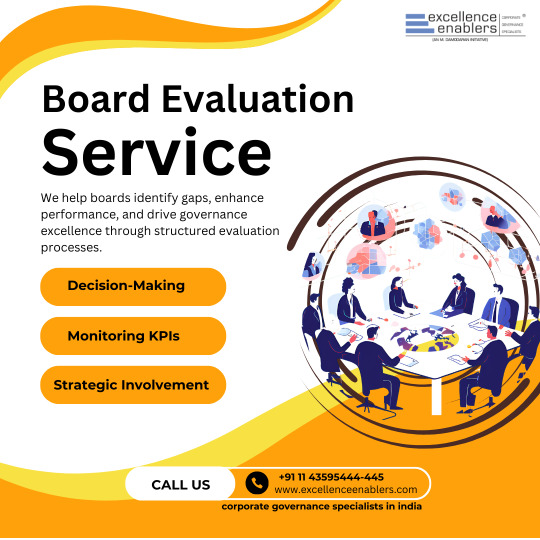
Excellence Enablers offers expert-led board evaluation services to help organizations strengthen their corporate governance frameworks. By identifying gaps, monitoring KPIs, and enhancing decision-making, we empower boards to drive strategic involvement and long-term value. Whether you're a startup or a large enterprise, effective board evaluation is key to governance excellence.
0 notes
Text
youtube
onsemi: Getting Started with CEM102EVB and RSL15
https://www.futureelectronics.com/resources/featured-products/onsemi-cem102-analog-front-end . Get started with CEM102 EVB, including what software you need, building your first application, and monitoring current value. https://youtu.be/-k6U8iPUmBE
#future electronics#WT#onsemi#CEM102EVB#RSL15#onsemi RSL15#Embedded Systems#Wireless Connectivity#BLE5#Evaluation Board#Development Kit#IoT Devices#Youtube
0 notes